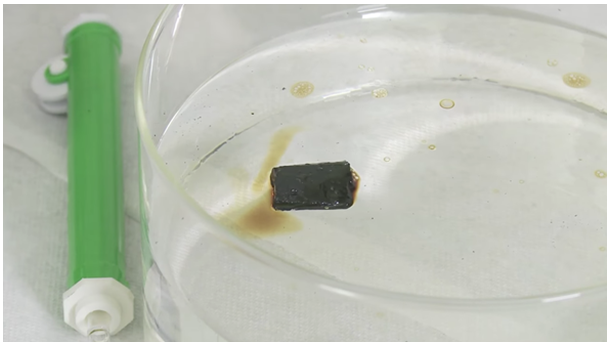eISSN: 2574-9927


Opinion Volume 4 Issue 6
1Department of Chemistry, Taibah University, Saudi Arabia
2Department of Chemistry, Sohag University, Egypt
3Department of Physics, Sohag University, Egypt
4Department of Física, Universidad de Oviedo, Spain
Correspondence: Ahmed M Abu-Dief, Department of Chemistry, Faculty of Science, Taibah University, Madinah, P.O. Box 344, Saudi Arabia
Received: November 09, 2020 | Published: November 23, 2020
Citation: Abu-Dief AM, Salaheldeen M. Opinion on nanomaterials for carbon capture and conversion. Material Sci & Eng. 2020;4(6):149-150. DOI: 10.15406/mseij.2020.04.00142
The greenhouse gas (GHG) impact has shown that the release of massive amounts of carbon products into the atmosphere has a warming effect on the planet (Figure 1), possibly resulting in unhealthy regional air quality and disastrous weather effects as fossil fuel burning continues to increase energy demand, the production of energy-efficient and cost-effective carbon dioxide technologies. CO2 will actually serve as a feedstock that is renewable. It can be used both as an environmentally benign viable solvent method and as a reagent in the synthesis of different chemicals. It offers a viable alternative to replace the depleting petroleum feed stocks used to manufacture chemicals of industrial significance. The production of new CO2 applications in purification and chemical synthesis would also minimize the use of global petroleum. A double-edged sword is the simultaneous use of an abundant by-product: it not only provides products that benefit both households and industry, but also represents a proactive step towards maintaining our fragile global climate. Therefore, new technologies based on innovative materials and processes need to be built to reduce the disastrous effects of weather disasters and global warming and to achieve a sustainable energy future, enabling the capture and simultaneous conversion of CO2 into useful chemical compounds. Some possible CO2 storage facilities are provided by depleted oil or gas reserves and deep sub-sea or onshore saline aquifers (Figure 2).1,2

Figure 2 A sponge made of pure carbon nanotubes with a dash of boron shows remarkable ability to absorb oil spills from the surface of water.
Current efforts are aimed at the production of natural storage facilities such as chemical CO2 storage components. But it must be isolated from the waste gases before CO2 can be processed. The key CO2 capture process is the extraction of CO2 from flue gas (nitrogen, water, dust particles, and CO2), which usually requires the capture by solvent absorption. Improved technologies are needed to achieve the goals of cost-effective and energy-effective carbon dioxide capture. Instead of simple sequestration, advances over time have also prompted research into the direct conversion of carbon dioxide into useful goods. Nanotechnology can play a major role in reducing CO2 globally. Recent development and research activities have shown that the ability of nanotech-enabled materials to provide viable solutions to the challenges of energy-efficient, cost-effective and high-volume CO2 capture is enormous. Then the task is to turn this CO2 into useful products. Nanotechnology is thought to be able to provide feasible material solutions to this complex technical dilemma. A new method of solution for carbon capture uses materials from the nanostructure membrane. It is believed that CO2 separation by nanostructure membranes is energy-efficient because it consumes only up to 8% of the energy generated. Furthermore, the use of this low-cost carbon nanostructure membrane technology for CO2 capture will greatly reduce installation costs. This includes the membrane of the polymer nanostructure, molecular sieve membranes of carbon and ceramic nanomembranes, etc. Compared to polymer membranes, ceramic nanomembranes are more durable, having greater tolerance for extreme conditions such as high temperatures. As for future study, the development of nanostructured catalysts (or nanocatalysts) with enhanced functionality is one potentially promising field of research (Figure 3).3
The catalytic conversion must, however, be successful and operate under mild reaction conditions. Most significantly, the process must be economical. Many of the catalytic methods require harsh reaction conditions, and the process-generated fuels do not generate as much energy as they need to produce them. In order to address the problem, the creation of appropriate nanocatalysts can provide a good solution. Promising progress in this direction has been made, but much more research is needed to understand the full effect of nanocatalysts in this direction. In addition to reducing the impact of other environmentally harmful chemicals, future research needs to be geared towards the production of multifunctional nanomaterials for efficient carbon capture and conversion. This would not only help to decrease ambient greenhouse gas concentrations, but also significantly eliminate chemical emissions that are detrimental to human health. In the coming years, useful goods such as chemicals, carbonates, plastics, fuels, construction materials and other resources will be developed using nanotech-enabled carbon capture and conversion technologies, which will be an important feature of carbon capture and storage technology. When CO2 is released by any factory or coal burning process at a power plant and subsequent emissions are combined with the process of CO2 sequestration, it becomes the most efficient and efficient. In today's scenario, CO2 capture presents the higher limit of effective capture techniques that are usually used solely to comply with government regulations on CO2 capture. The process of capture and subsequent conversion will add an ecologically benign factor to a plant that usually exports harmful fumes. In addition, the applications of the nanotechnology-enabled sequestration method are not only limited to large mechanized plants. Carbon capture and conversion technology can be used in other processes, such as urban air purification, or can even be made portable for domestic use, as the technology develops into a superior one. A cleaner, fresher future for air and a closer step towards achieving a sustainable civilization will be the future advancement of any of the processes or technologies.4
None.
Author declares that there is no conflict of interest.

©2020 Abu-Dief, et al. This is an open access article distributed under the terms of the, which permits unrestricted use, distribution, and build upon your work non-commercially.